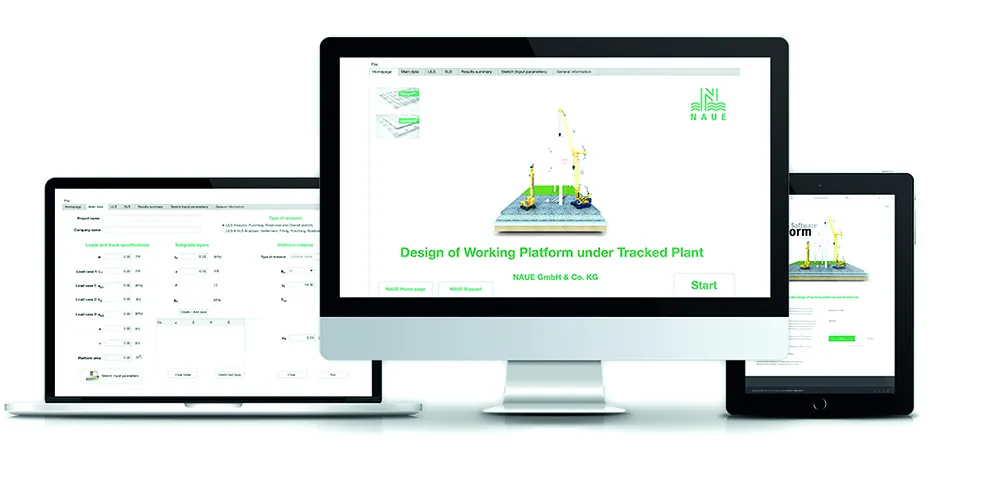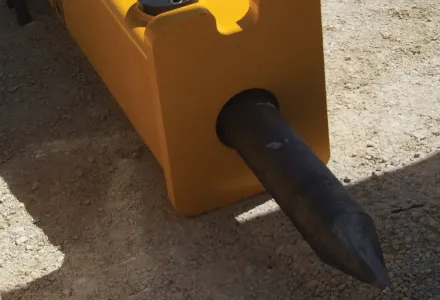
The correct design of platforms is of importance for the stability and the operational safety on the working platform. NAUE has recognised the need for action and provides a design tool for stabilised and reinforced working platforms with the NAUE Platform software. On the basis of scientific research using large-scale model testing, a holistic design approach for Secugrid and Combigrid stabilised and reinforced working platforms has been developed.
The Hybrid model allows the design of working platforms over soft to stiff cohesive subgrades against different potential failure modes. These could, for example, be punching shear failure or rotational and overall failure mechanisms using the so-called Kinematic-Element-Method (KEM). The adapted model can automatically identify the decisive failure mechanism and determine the granular platform thickness to withstand the most critical situation. In addition, deformations, differential settlements as well as tilting of the equipment caused by the operational loads can be estimated by the NAUE Platform software.
The calculation results allow a direct comparison between Secugrid and Combigrid stabilised and reinforced granular working platforms and the conventional construction method without geosynthetics.








